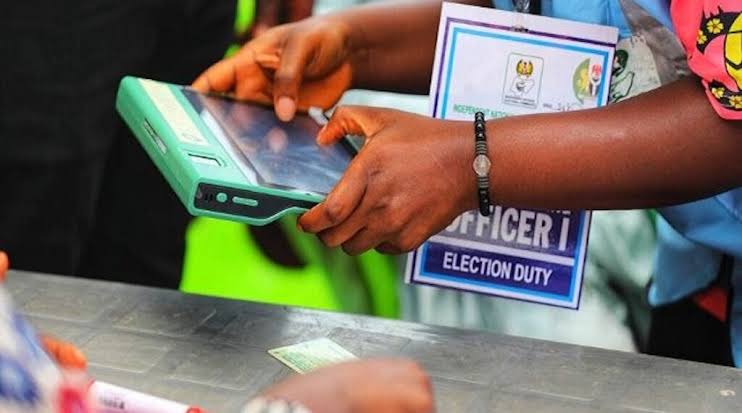The Independent National Electoral Commission (INEC) has said that the glitch experienced in uploading the scanned images of Polling Unit (PU) result sheets in the February 25, 2023 presidential election was “due to the inherent complexity within the system which was difficult to anticipate and mitigate.”
The commission revealed that while the uploads for the National Assembly election results succeeded because the application identified the respective states and built folder hierarchy for the results organisation process for the elections, attempts to upload the presidential election result sheets, which does not belong to or mapped to any state on the database, failed.
It added that this failure was attributable to the inability of the application to create and build a folder structure to organise the uploaded images of the result sheets of the 2023 presidential election.
This is was disclosed by INEC in a 500-page 2023 Post-Election Report released on Friday.
The report further noted that the first presidential election result sheet was successfully uploaded at 8.55pm on February 25, 2023, after interventions to resolve the error.
The commission, nonetheless, insisted that the glitch in the upload of the presidential election result sheets to INEC Result Viewing portal (iREV) did not affect the credibility of the election, adding that agents of political parties and security agents were given copies of polling unit results after they were announced in public.
Recall that the failure to upload results of the presidential election in real-time had caused major concerns in the course of the election process. While INEC explained that the failure was caused by a technical glitch, the opposition parties rejected the excuse, alleging a foul play in favour of the ruling All Progressives Congress (APC).
However, in the report, which chronicled all activities before, during and after the 2023 general election, INEC stated: “during the troubleshooting process, it was established that there was no issue in uploading the PU result sheets of the Senate and House of Representatives elections through the Election Result Modules.
“However, there was a problem with uploading the presidential election results to the system. Attempts to upload the results were generating internal server errors, which refer to a significant impairment that usually originate from within an application due to problems relating to configuration, permissions, or failure to create or access application resources correctly.
“Further interrogation of the Election Result Modules indicated that the system is encountering an unexpected configuration problem in mapping the presidential election results uploaded into the system to the participating Polling Units.”
The report added that due to the complex, sensitive and critical nature of the systems and the real potential for malicious cyber attacks, the commission immediately put in place several strict security and audit control measures to prevent any unfettered or elevated access to the Result Upload System.
The report added that in the process of resolving the challenge, it was discovered that the backend system of the IReV was able to query and detect the base states for uploading the PU result sheets based on the mapping of all Senatorial District and Federal Constituency elections to the respective 36 States of the Federation and the FCT as established in the database structure deployed within the system.
“In configuring and mapping the election results for the presidential and NASS elections, the Commission created Four Hundred and Seventy (470) election types consisting of one presidential constituency covering the entire country, 109 Senatorial Districts and 360 Federal Constituencies.
Each Senatorial District and Federal Constituency election on the database was mapped to their respective States.
“However, the presidential election result is a single, countrywide constituency and therefore, does not belong to any one State.
Consequently, while the uploads for the NASS elections succeeded as the application was able to identify the respective State and build the folder hierarchy for the results organization process for the election, attempts to upload the presidential election results sheets, which does not belong to or mapped to any State on the database, failed. Instead, it returned a HTTP server error response.
“This failure is attributable to the inability of the application to create and build a folder structure to organize the uploaded images of the result sheets of the presidential election.
“Having identified and established the source of the problem, the Commission quickly created and deployed “Hotfixes” which are software updates for fixing a bug or any vulnerabilities in a system. The deployed hotfixes eventually resolved the HTTP error on the system and the first presidential election result sheet was successfully uploaded at 8.55pm on the 25th of February 2023.
“After the problem with the upload was resolved, the Commission noticed a high volume of uploads on the queue. All results that scanned but could not be uploaded due to the error were queued waiting to be automatically processed. Due to the large volume and high traffic from the queue, the system was running slower, even though it tried to scale up automatically to handle the unanticipated heavy traffic. The density of the traffic that slowed the uploads was one issue.
“Another was that the offline queue requires the BVAS devices to be switched- on and connected to the internet for the upload. However, some of the POs had at the time left their PUs, and the devices had either been switched-off, or were out of internet coverage. Switched-off devices could not connect and upload the results sheets. The Commission had to reach out to the POs of affected areas to switch-on their systems and ensure internet connectivity for the uploads to continue. This accounted for the delay, with some of the results coming in the next day.
“By and large, the glitch experienced in uploading the scanned images of PU presidential election result sheets on 25th February 2023 was due to the inherent complexity within the System, which was difficult to anticipate and mitigate.
“Thereafter, the Commission has made improvements on the IReV and taken additional steps to build more resilience and undertook additional checks to ensure the stability and optimal operation and performance of the IReV portal. Additional quality assurance checks are now done to complement the end-to-end testing of the entire result upload ecosystem before the conduct of any election.
“However, the glitch in the upload of the presidential results sheets to iREV did not affect the credibility of the election. Agents of political parties and security agents were given copies of polling station results after they were announced in public.
“The results were also displayed at polling units for scrutiny by voters. So when they were eventually uploaded, it was easy to compare them with the copies displayed at polling centres and given to party agents and party officials.
“The 2023 General Election produced the most diverse outcome in recent Nigerian electoral history in terms of party representation in executive and legislative elections nationwide. Thus, four (4) political parties produced State Governors, seven (7) secured Senatorial seats, eight (8) won federal constituencies and nine (9) in State seats.
“A granular analysis of the results and performance of the leading parties across the country affirms this diversity. The performance of the four (4) leading political parties – APC, LP, PDP and NNPP – in the presidential election across the 6 geopolitical zones in respect of the required 25% threshold to win a state in a presidential election is shown in Table 9.6 below.
“Clearly, across the zones, the performance of the four (4) leading parties shows the diversity and subtlety in the results, attesting to the integrity of both the process and outcome,” the electoral umpire stated.





